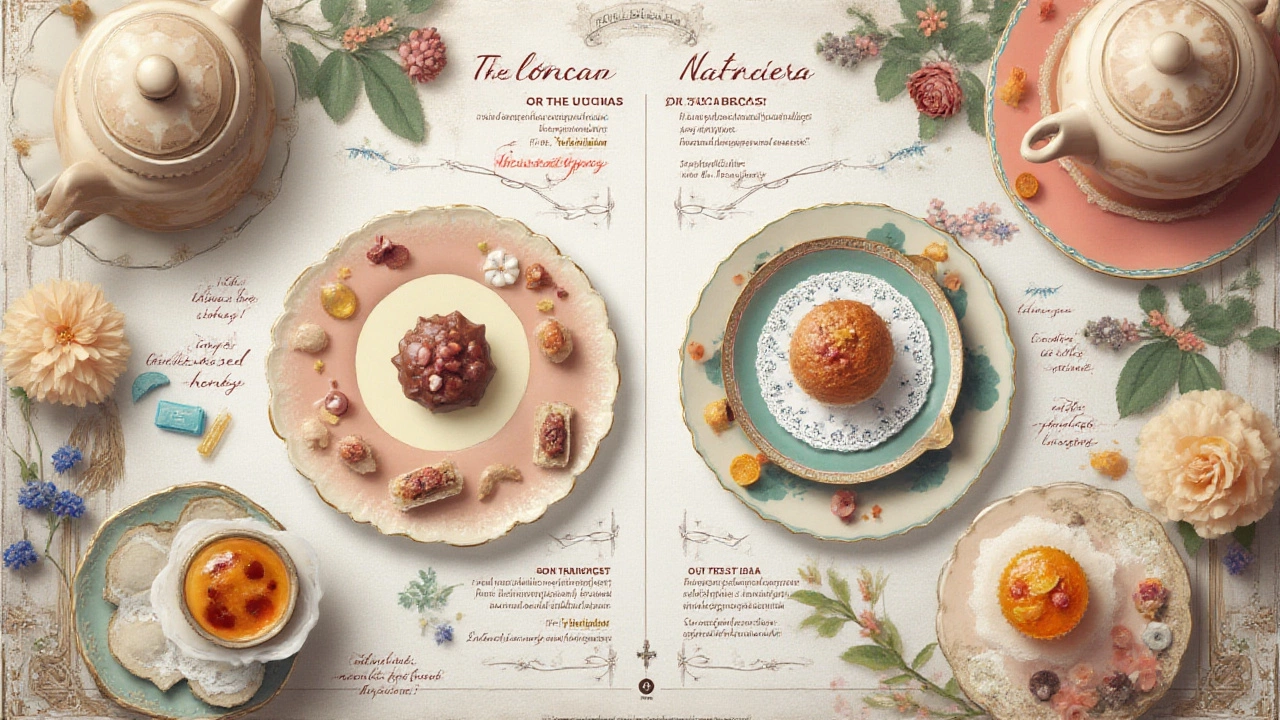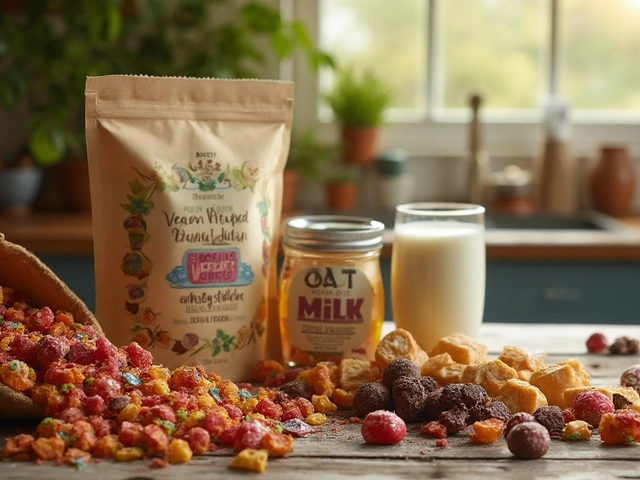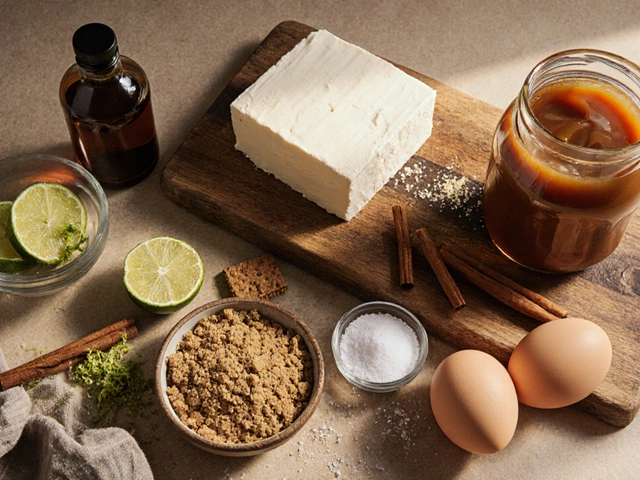
Ever stood in the candy aisle, reading tiny ingredient lists with one eye, phone in the other, about to abandon your sweet craving because you can’t remember if carmine is bug dye or a medieval disease? If so, you’re in the right place. Vegan candy isn’t just carrot sticks disguised as gummy bears. There’s an entire world of sweets—famous brands included—that won’t rain on your ethical parade. Even better, you can still enjoy a sugar rush at the movies, after dinner, or while hiding in your car after a stressful meeting. It’s surprising just how many iconic treats actually make the cut—and you probably walked past them in the grocery store without even realizing. Let’s unwrap the facts so you’ll never again be defeated by cryptic labels or mysterious E-numbers.
What Makes Candy Vegan? The Sweet Science
You might think it's just about skipping the milk chocolate, but the reality is way more complicated. To earn the vegan badge, candy must be free from all animal products: no gelatin (bye-bye, ground-up bones and skin), no shellac (that's a bug secreted glaze—you'd be surprised how often it's in shiny sweets), no dairy, honey, or egg whites, and definitely no carmine (yep, that bright red comes from crushed beetles). Even some sugars get tricky: bone char, made from animal bones, is still used by certain US sugar producers to whiten regular cane sugar. Fun, right?
Sneaky non-vegan ingredients to watch for:
- Gelatin: Made from animal collagen, it shows up in most chewy candies like marshmallows, gummy worms, and some jellybeans.
- Confectioner’s glaze (or shellac): Gives candies a glossy finish but is derived from lac bugs.
- Carmine (E120): A red dye made from crushed cochineal insects. You’ll see this in reds and pinks, especially in fruit-flavored candies.
- Milk-derived ingredients: Look for names like whey, casein, lactose, and nonfat milk powder, especially lurking in chocolate and cream-filled sweets.
- Honey: Sometimes used for flavor or as a binding agent.
Let’s get nerdy for a sec: A 2024 survey by SpoonGuru found that nearly 37% of younger Millennials and Gen Z shoppers look for "vegan" or "plant-based" badges on sweets, mostly because hidden animal ingredients have caused enough heartbreak. Meanwhile, food law keeps getting updated, so labeling is slowly improving—but don’t count on every company to play nice. Here’s a quick cheat sheet in table form:
| Ingredient | Animal Source? | Common in |
|---|---|---|
| Gelatin | Yes | Gummies, Marshmallows, Jellybeans |
| Shellac/Glaze | Yes | Jellybeans, Hard-coated sweets |
| Carmine | Yes | Red/pink candies, Fruit snacks |
| Dairy (Whey, Casein) | Yes | Chocolates, Creamy centers |
| Bone Char-Filtered Sugar | Maybe | Generic Candy (mostly US-made) |
| Agar-agar, Pectin | No | Some gummies, Jellies (vegan options) |
Spotting vegan candy becomes easier once you know the common traps. Plant-based alternatives are gaining ground, so don't forget to peek at the label for pectin, agar, or starch-based candies. It’s less about memorizing complicated lists and more about understanding a handful of "no-go" animal ingredients. Once you learn to scan for those, you’re basically fluent in candy veganism.

Major Candy Brands: The Vegan Hits and Misses
If you think vegan candy options are limited to sad health-store sweets or bland jelly beans, it's time for a plot twist. Many best-selling candies are vegan either by design or by accident. You'll still need to keep your radar up for regional variations and those weird "may contain" disclaimers. Let’s look at the best-known brands out there in August 2025—and which of their offerings pass the vegan test.
Starting strong, Skittles are a classic example of an iconic treat that’s now vegan. Once made with gelatin, they switched to a plant-based formula back in 2009, and removed carmine and shellac entirely by 2016. In the US, the regular, Sour, and Wild Berry varieties are all safe picks. Just avoid "Chewy" or "Dips" releases that sneak in a yogurt coating.
Swedish Fish have always been gelatin-free! They use a mix of corn syrup, modified food starch, citric acid, and carnauba wax. No fish, no animal ingredients—just a sweet, chewy, nostalgia bomb. Read the label, though: the "Assorted" versions overseas have included beeswax at times.
A total surprise to most: Original Twizzlers (the classic strawberry twists) are vegan in the US and Canada. They use corn syrup, flour, and artificial flavors, but no gelatin or animal-based glazes. Pull ‘N’ Peel and filled versions, though, sometimes add sweet creams with dairy—definitely double-check those labels.
Sour Patch Kids are another fan favorite. They use modified corn starch or tapioca and don’t rely on gelatin. Sugar is the only question mark, since the source may or may not be filtered with bone char—but according to Mondelez, their supplier doesn’t use animal derivatives for these. In the UK, they’ve even got a vegan-certified stamp.
Jolly Ranchers (hard candies) make the vegan list, but their chews and gummies contain gelatin. Standard Starburst in the US isn’t vegan—gelatin and dairy pop up in the ingredients. But if you find the UK version, Starburst replaces gelatin with pectin, making it plant-based there. Why are they different? International recipes, packaging, and weird candy politics.
If you’re dreaming of chocolate, most mainstream milk chocolate bars are off-limits. Goodbye, Snickers, Kit Kat, Reese’s, and Hershey’s. But there’s hope: consider Lindt’s Excellence 70% Cocoa Dark Chocolate (and higher percentages), which don’t use milk derivatives in the main US and Europe product lines. Also rescue-worthy: Ghirardelli Intense Dark Bars, though some flavors (like those with creamy fillings or caramel) do add milk fat. You’ll find small indie brands specializing in vegan milk chocolate, like Theo, Hu, or Enjoy Life, but you’ll usually be out of luck with the big chocolate brands unless you stick to the very dark stuff.
Here’s a clear breakdown in handy chart format:
| Candy | Vegan? | Watch Out For |
|---|---|---|
| Skittles | Yes | Specialty flavors with dairy |
| Swedish Fish | Yes | Overseas beeswax versions |
| Twizzlers (U.S.) | Yes | Filled/unusual flavors |
| Jolly Ranchers (Hard) | Yes | Gummies, Chews |
| Sour Patch Kids | Yes | Regional ingredients |
| Starburst (UK) | Yes | U.S. version uses gelatin |
| Lindt Dark Chocolate (70%+) | Yes | Cream flavors with dairy |
Let’s clear up some common letdowns. Haribo gummy bears—an instant nostalgia trip—aren’t vegan (the standard recipe uses gelatin and beeswax). Marshmallows, unless clearly marked vegan, are mostly made with gelatin. Lastly, M&M’s, Snickers, Milky Way, and Reese’s all contain milk chocolate and sometimes odd inclusions like sheep’s wool-derived vitamin D3.
What about vegan knockoffs? Plenty of companies are making Smartsweets, YumEarth Gummy Bears, and Wholesome DelishFish (a Swedish Fish dupe) using pectin or agar, and they slap vegan certifications right on the bag. You’ll also spot innovative brands like Unreal, which coats non-dairy nut butter in dark chocolate, and No Whey!, which does vegan takes on peanut butter cups and even "milk" chocolates for trick-or-treat season. Still, the real excitement is seeing how many mainstream names are jumping on board—or how many just turned out to be vegan by happy accident. There’s hope for candy lovers everywhere.

Tips for Navigating the Vegan Candy Jungle
Bring out your inner detective. Here’s how to conquer the candy aisle like a pro—and never panic Google "Is this vegan?" in the store again. First, learn the big red flags. Gelatin, carmine, and shellac are the biggest troublemakers. Scan for those immediately, and if you see one, move on. Dairy ingredients are a little sneakier, but phrases like “whey,” “casein,” and of course “milk” aren’t hiding so well these days. Anything with honey or "confectioner's glaze" is a hard pass for vegans. But if you can’t find these culprits, you’re off to a good start.
Next, think about where your candy is made. US-made treats can still include bone char sugar, while candy from the UK, EU, and Australia is more likely to use vegan or at least bone char–free sugar (and they’re stricter about labeling allergen info and animal content). Some US companies have improved a lot post-2020, but checking the country of origin is a safe bet for the truly dedicated.
Be wary of copycats and seasonal flavors. That Halloween or Valentine’s Day version of your favorite vegan treat might slip in a dairy-based filling or a touch of gloss with shellac, just for effect. It’s a pain, but always scan labels on "limited editions," even for brands you usually trust. If you can’t find answers on the packaging, check the FAQ section on company websites—many mainstream brands keep updated lists for vegans and those with food allergies.
Go with the flow if you’re short on time: stick to tried-and-true candies with a clear reputation for being vegan, like Skittles, Twizzlers (regular), Swedish Fish, Sour Patch Kids, and most brands of dark chocolate (70%+). Try not to stress about that "may contain milk" warning—it’s a cross-contamination note for allergy sufferers, not an ingredient, and most vegans are totally fine with this.
If you want new adventure, check out online vegan stores. They have pages of tasty innovations: vegan marshmallows, pectin-based fruit snacks, hard candies in wild flavors, and more. Some of the best brands for vegans in 2025 include: YumEarth, SmartSweets, Candy Kittens, Free From Fellows (UK), and Katjes (Germany’s new vegan gummy line, taking over since 2023). Even CVS and Target carry these options now in their snack aisles.
If you’re facing a label in cryptic abbreviations, here’s a cheat sheet for the most common "animal suspects":
- E120 = Carmine (not vegan)
- E901 = Beeswax (not vegan)
- E904 = Shellac (not vegan)
- E322 = Lecithin (usually soy, but sometimes egg-derived—brand info will clarify)
- E471/E472 = Mono- and diglycerides (sometimes plant, sometimes animal, but rare in candy)
For parties, holidays, or snack attacks, you’re not limited to fruit chews. Look for pectin-based jelly beans, vegan gummy bears (YumEarth, SmartSweets, Candy Kittens), and dairy-free chocolate bars. Even Oreo cookies are vegan in many countries—they’re not technically candy, but hey, close enough. Here are a few brands to keep on your radar this year:
- YumEarth (gummies, lollipops, fruit snacks)
- SmartSweets (low-sugar, pectin gummies)
- No Whey! Chocolate (everything from peanut butter cups to chocolate bunnies)
- Candy Kittens (UK, pectin-based gummies in fun flavors)
- Katjes (Germany, all-plant gummies)
Don’t forget—your options grow every year. Plant-based is the fastest rising category in snacks, with a 2024 Mintel report revealing a 39% jump in global vegan candy launches just since 2022. Big names are racing to expand plant-based lines to keep up with demand. For the moment, though, you’re already spoiled for choice. As more of us ask brands to ditch animal ingredients, vegan options will just keep getting tastier. Your sweet tooth—and your conscience—will thank you.










Write a comment